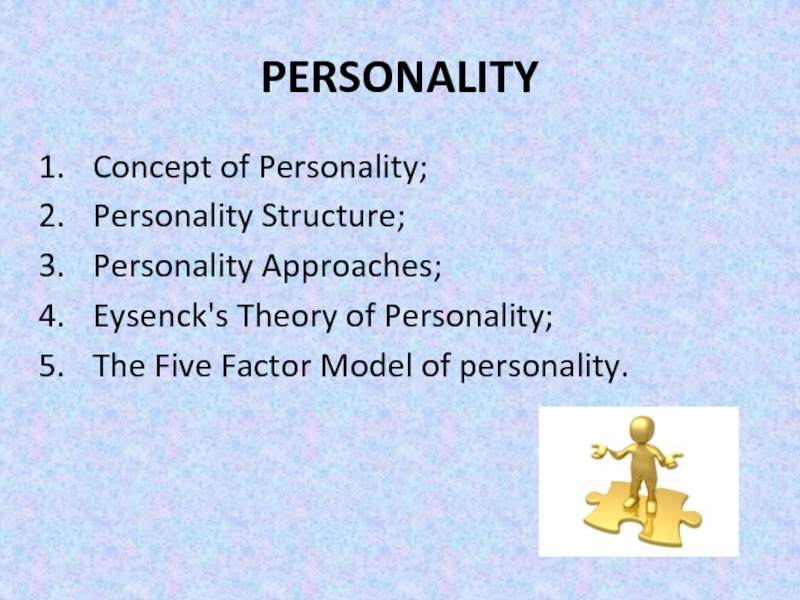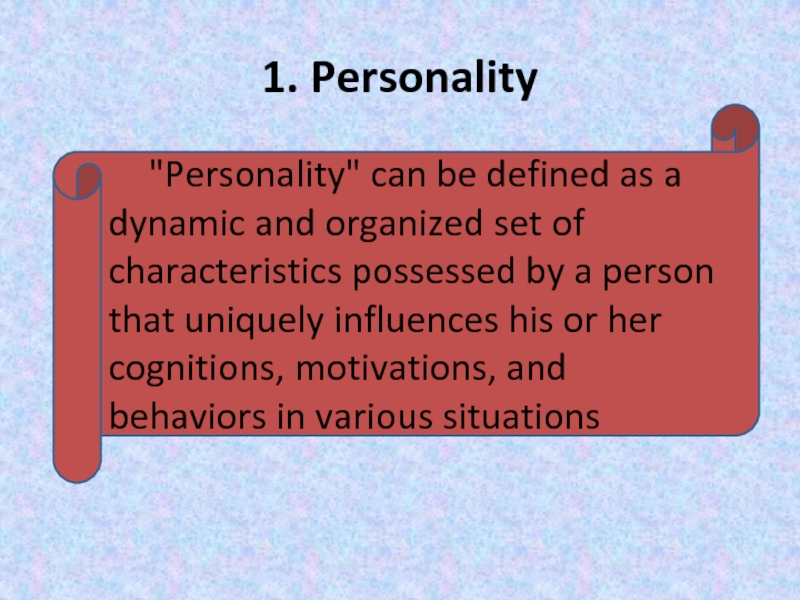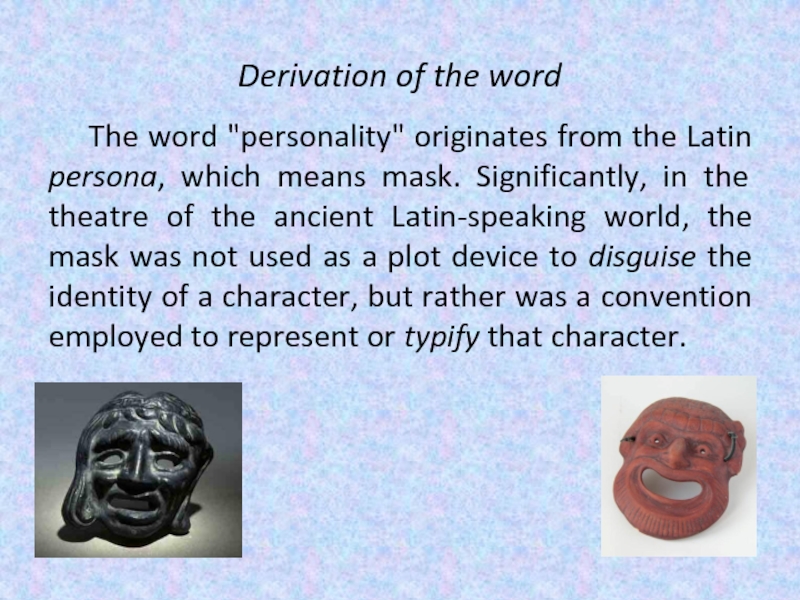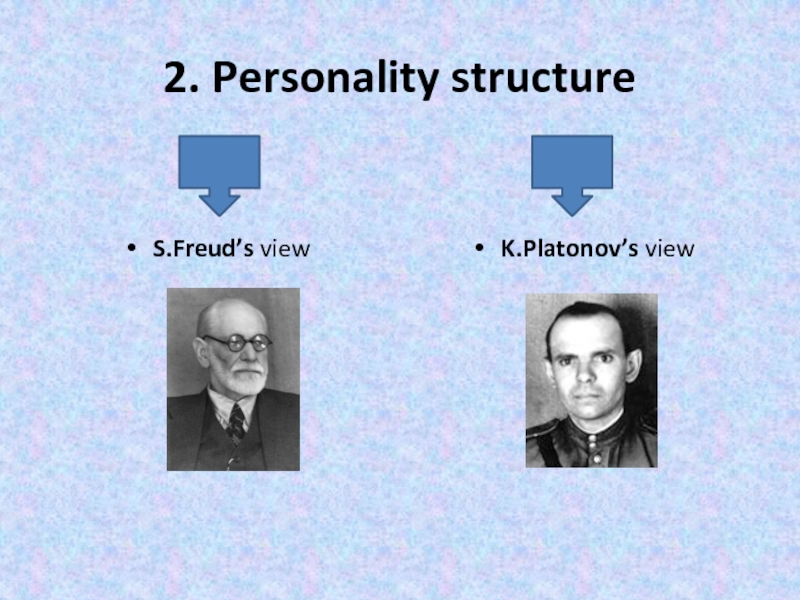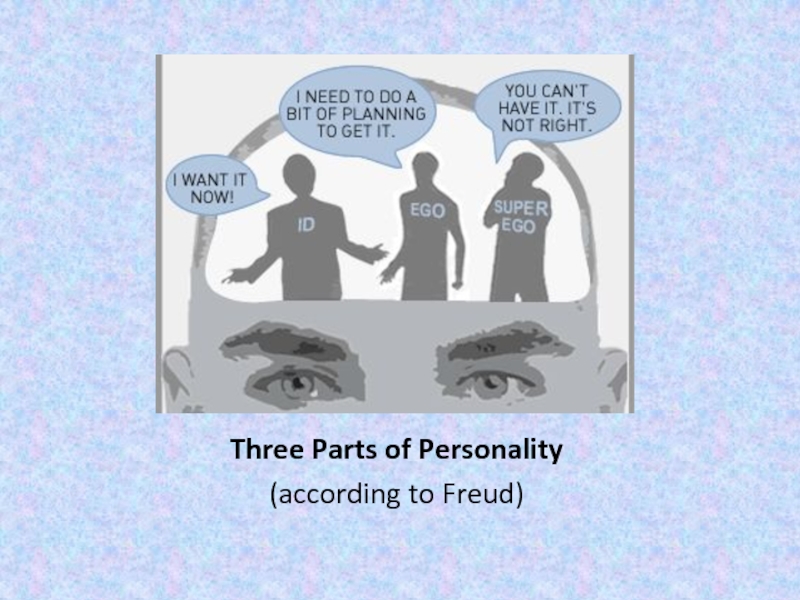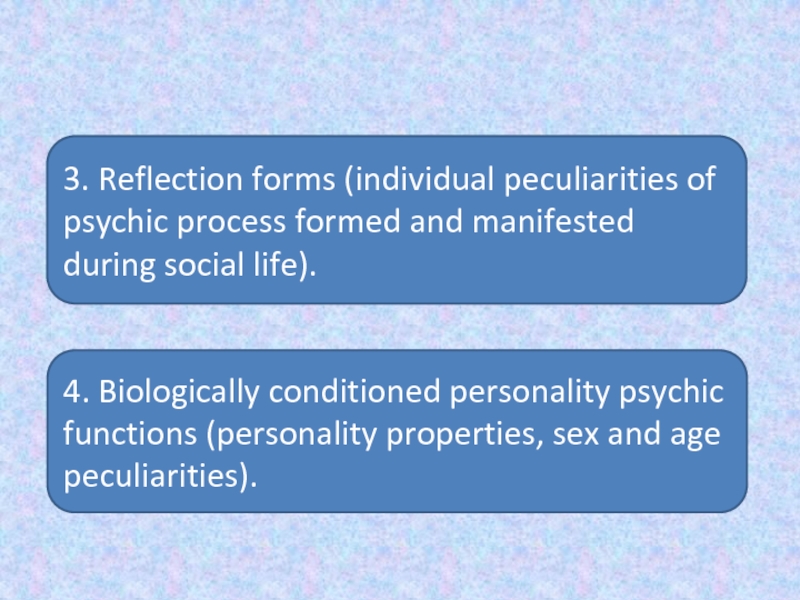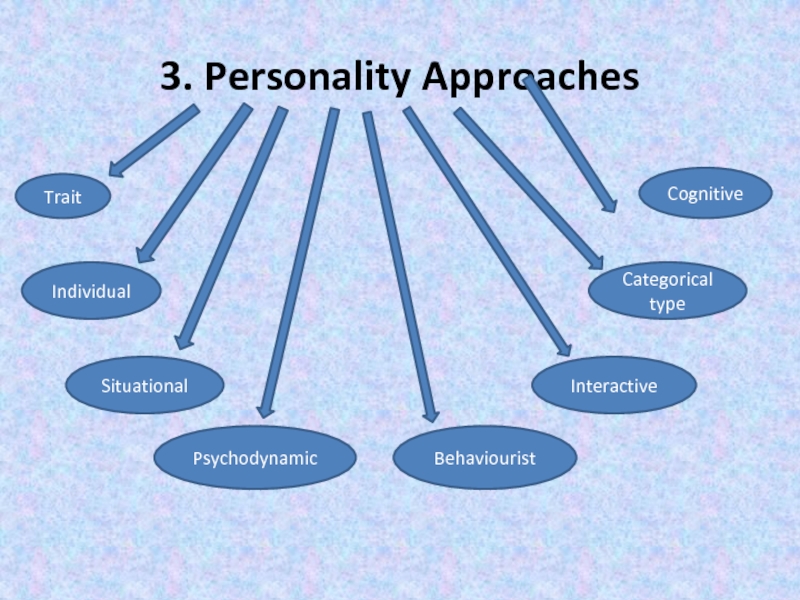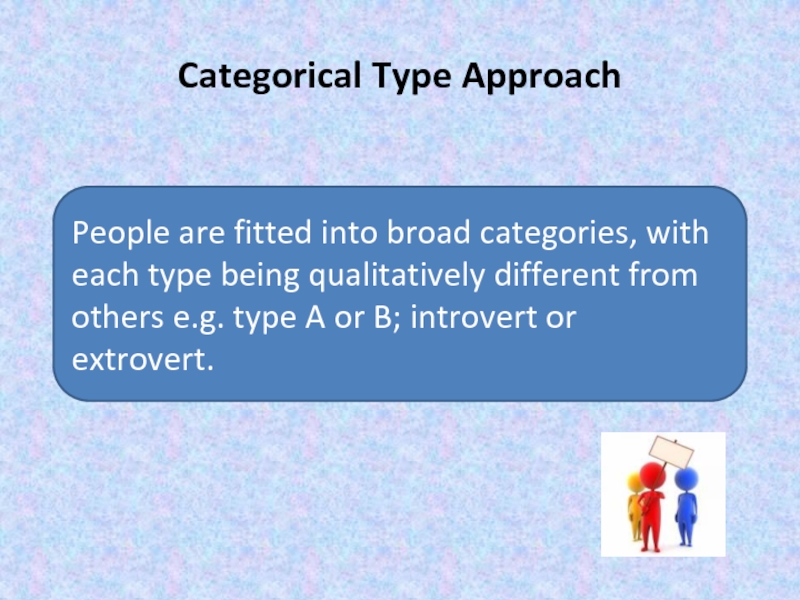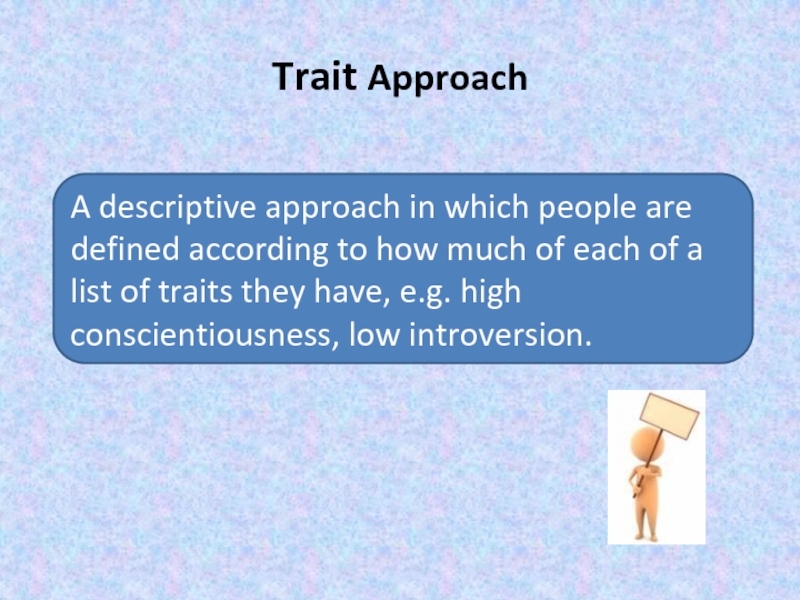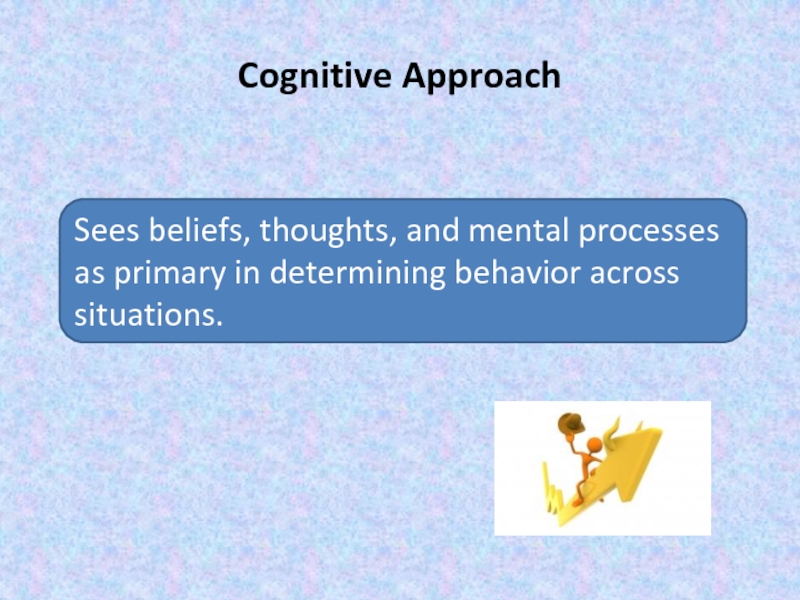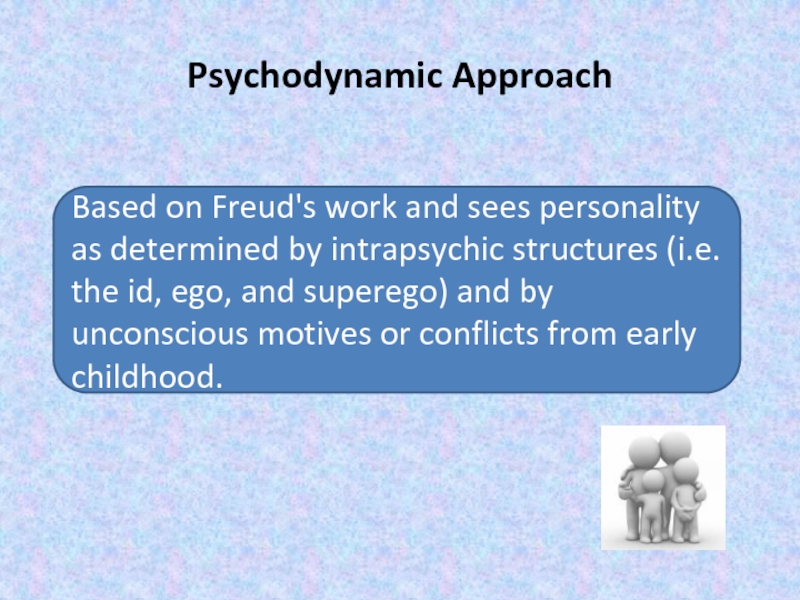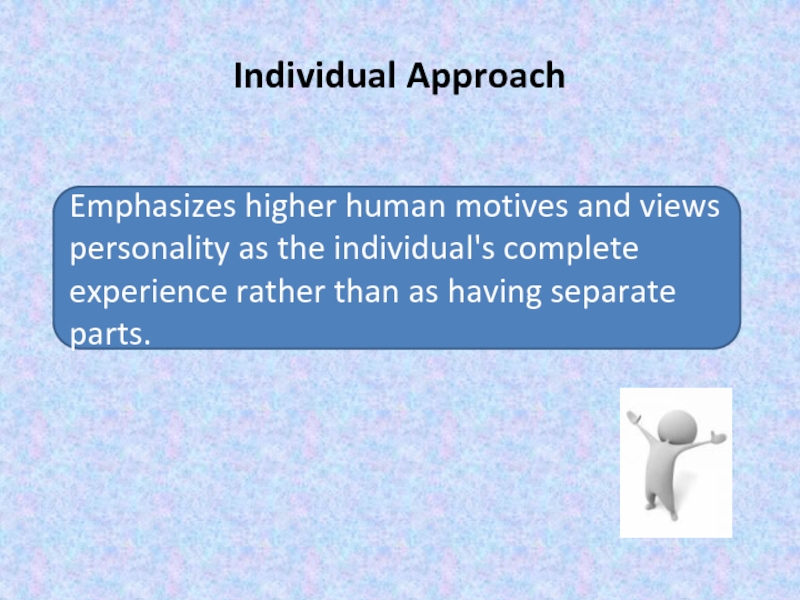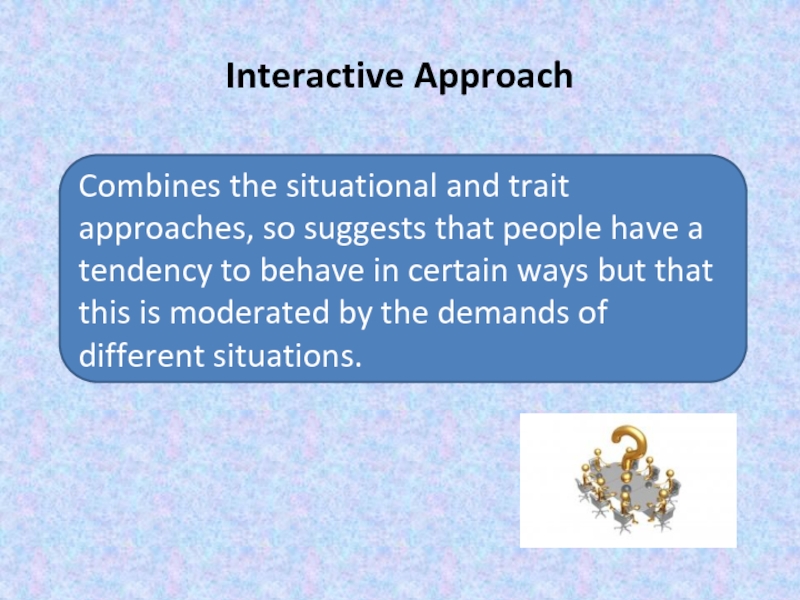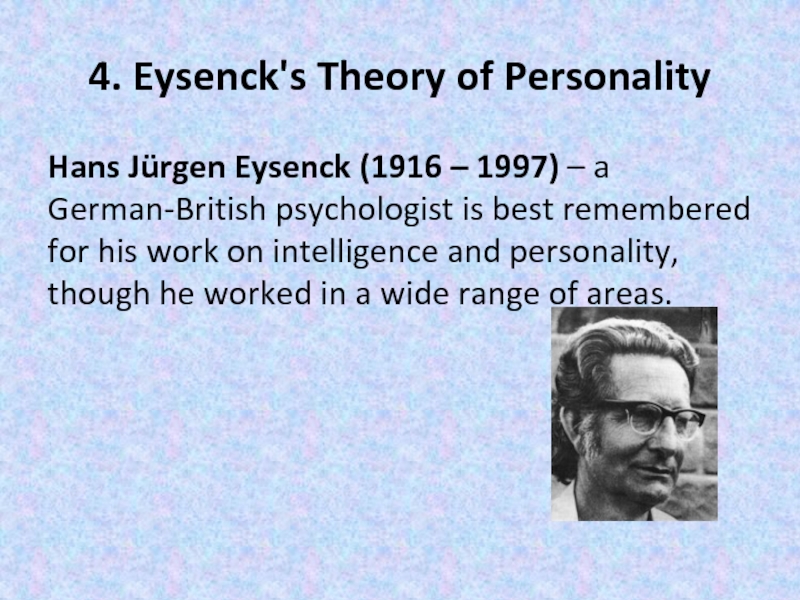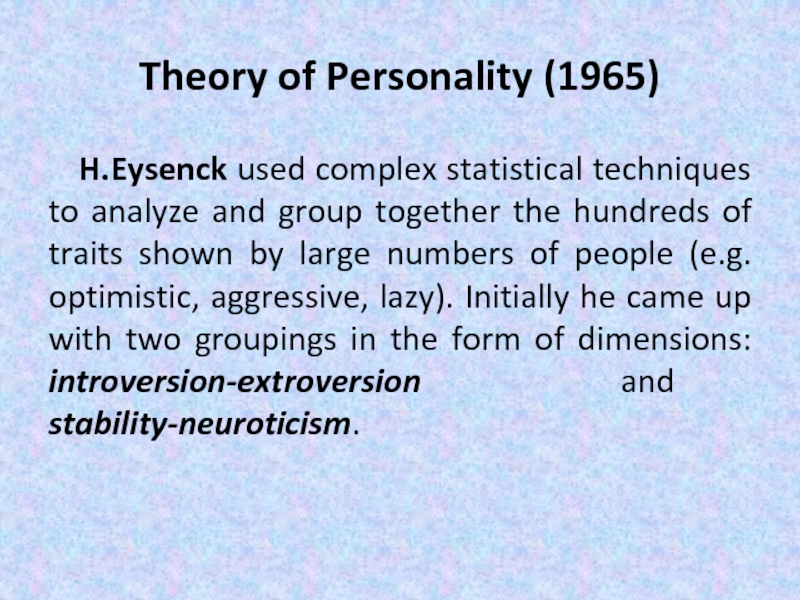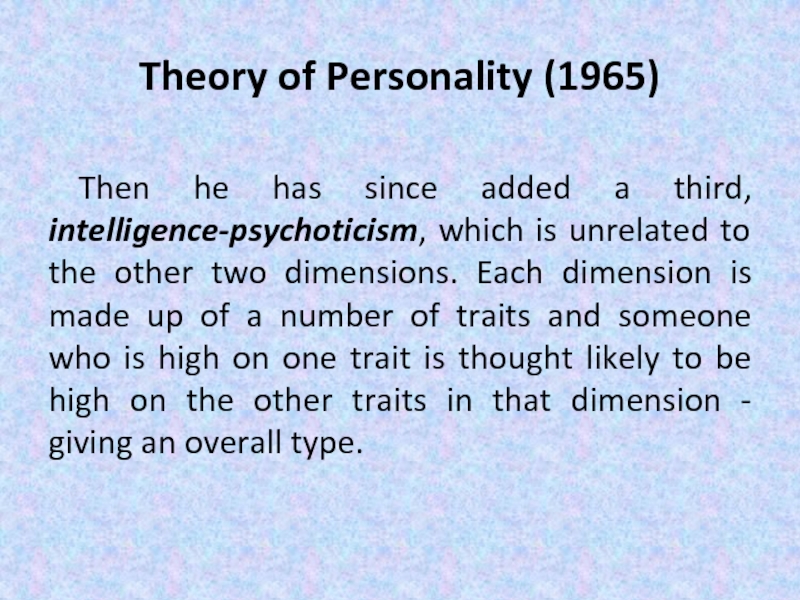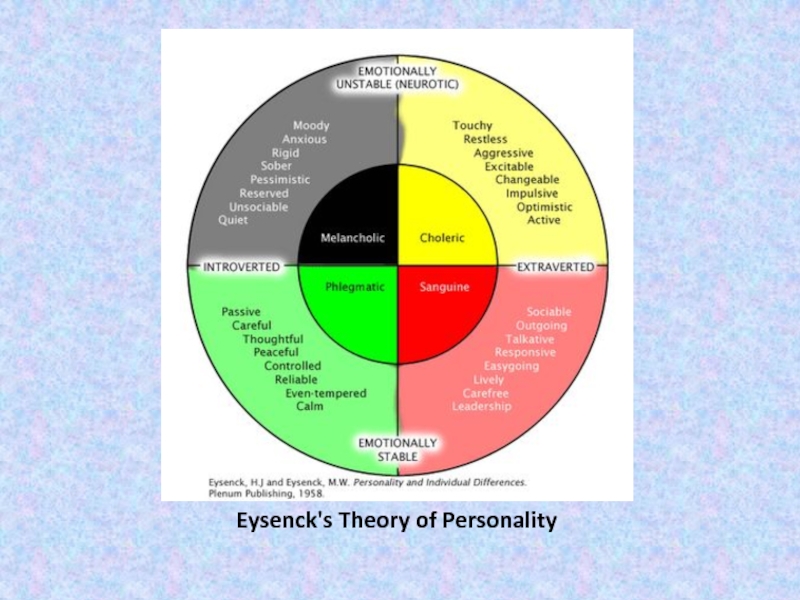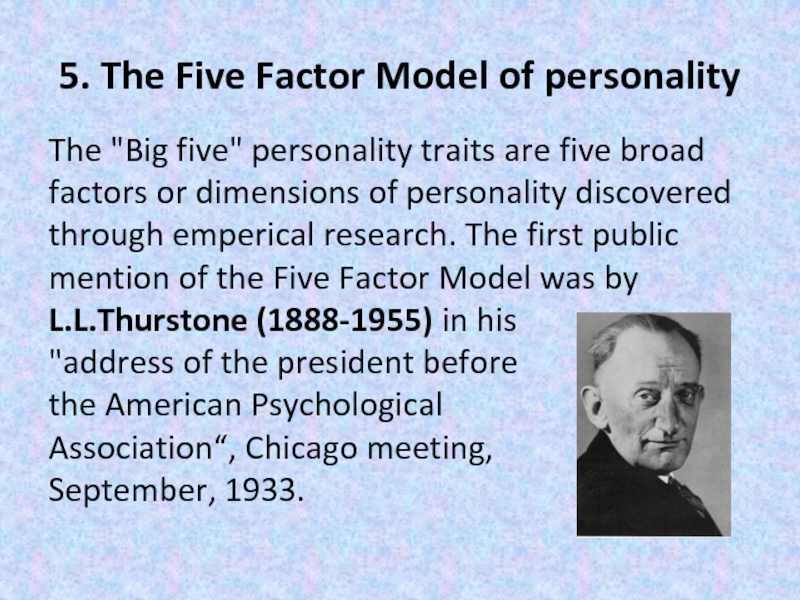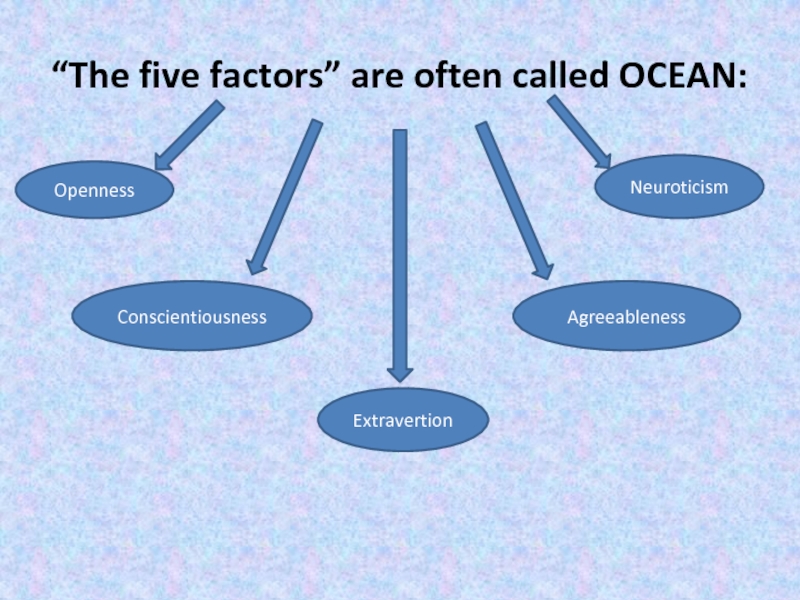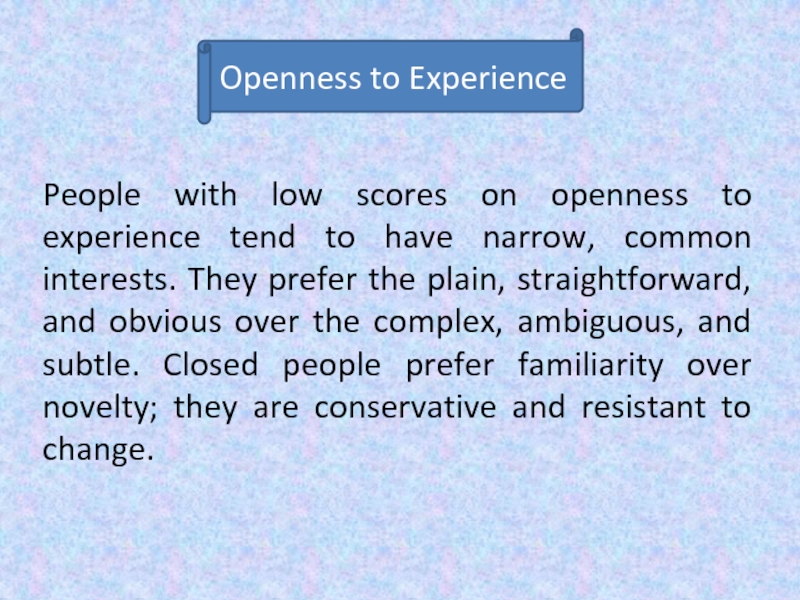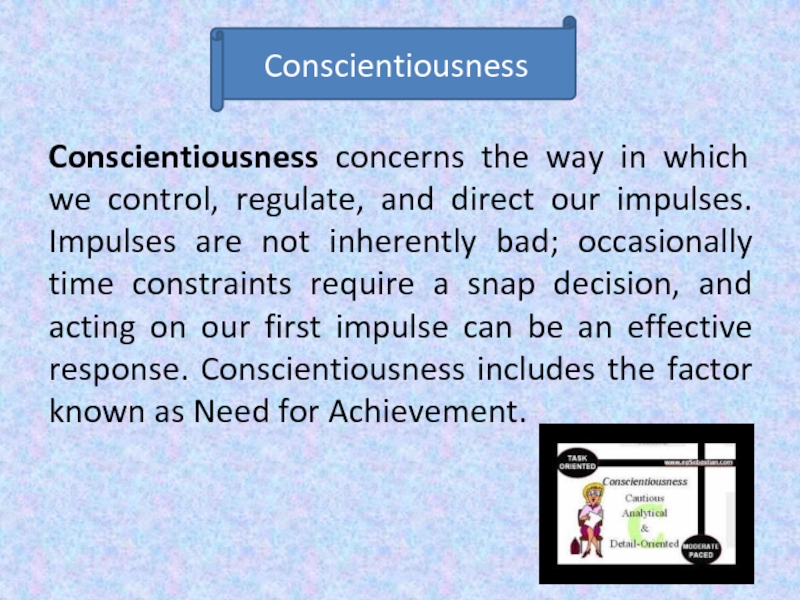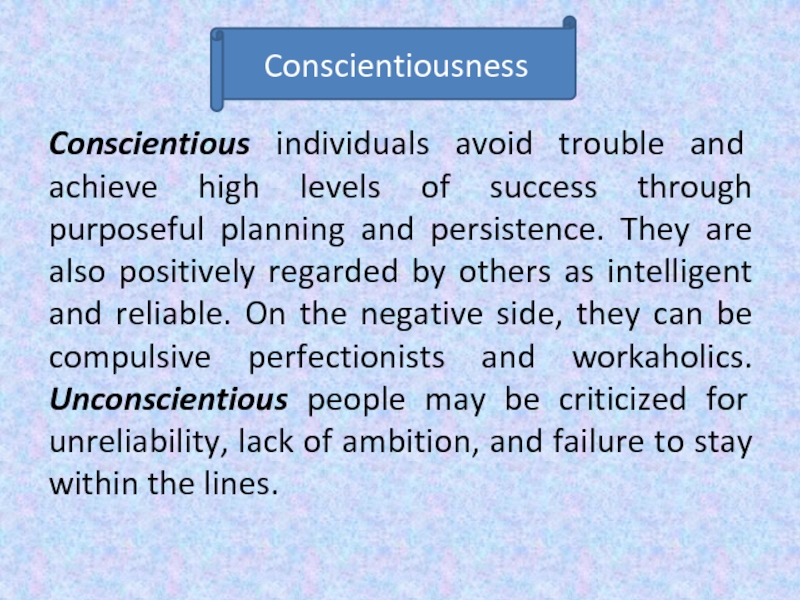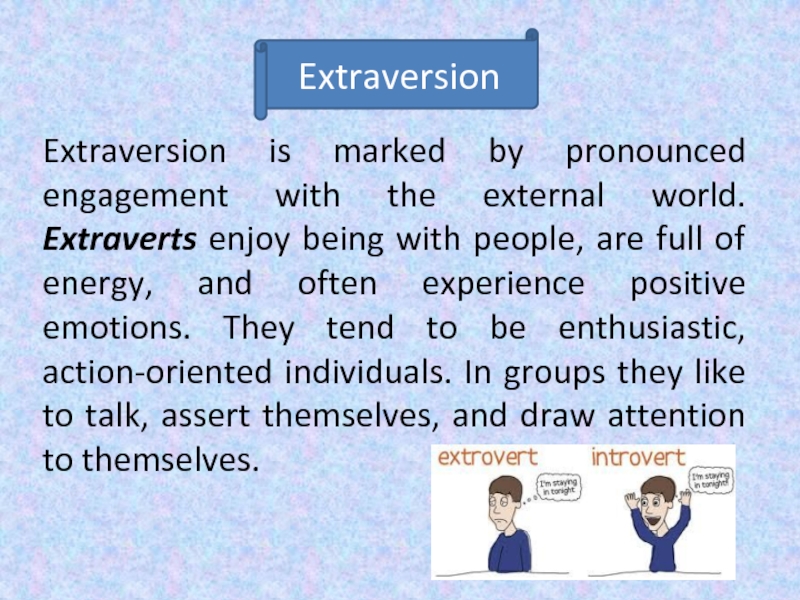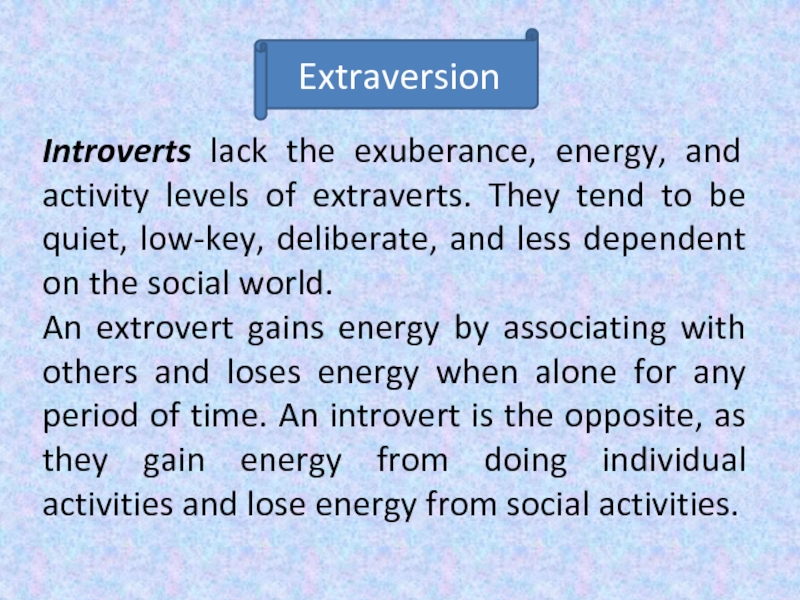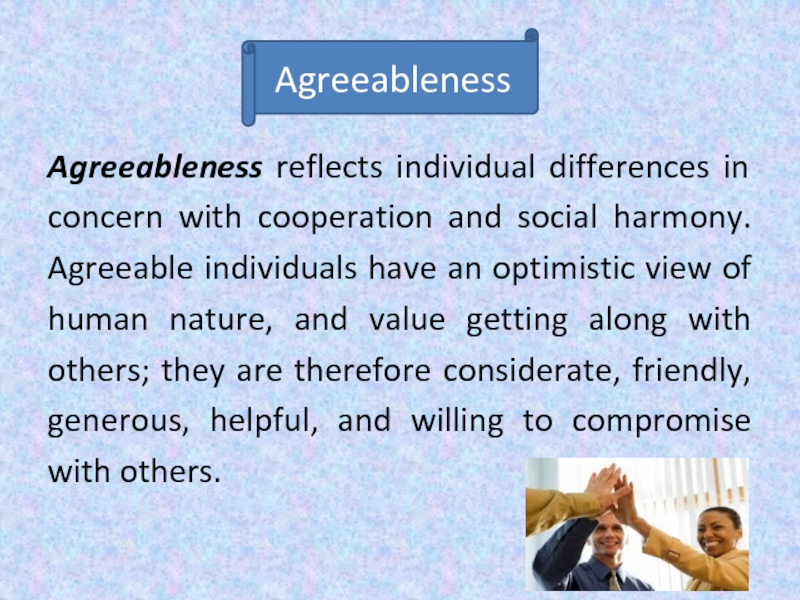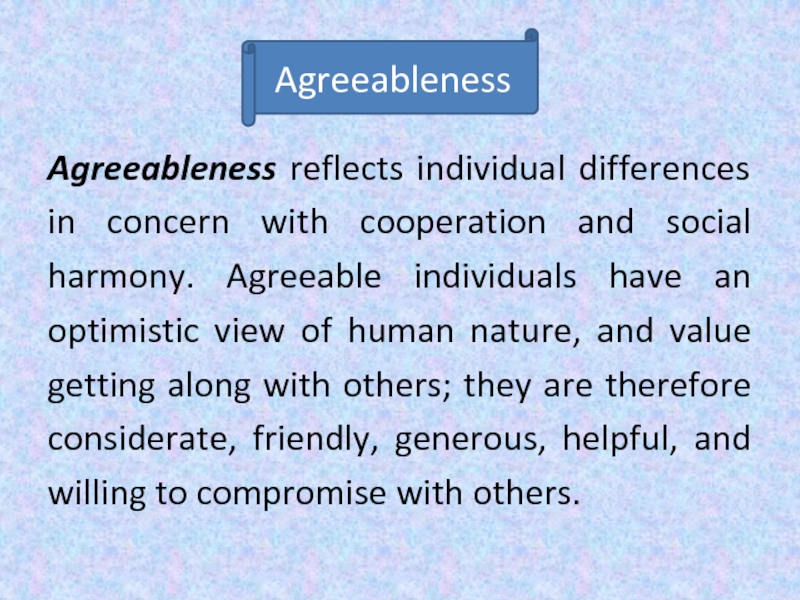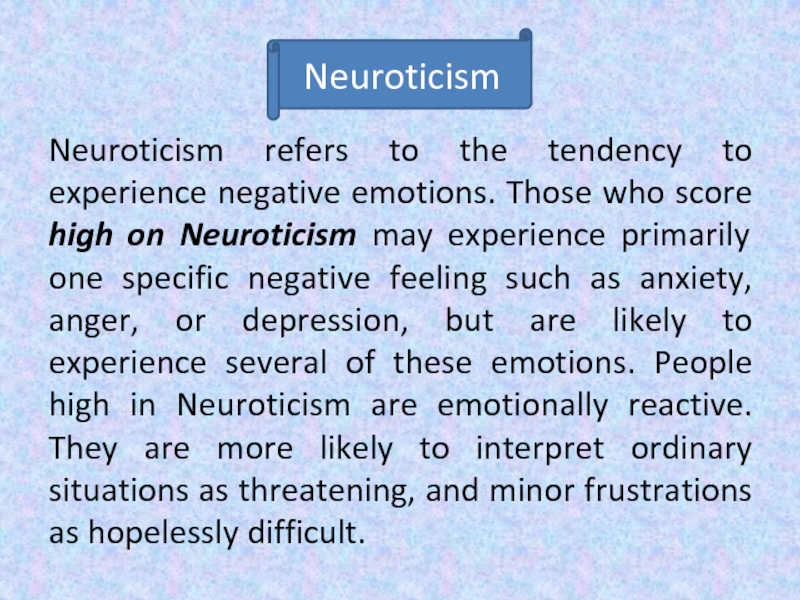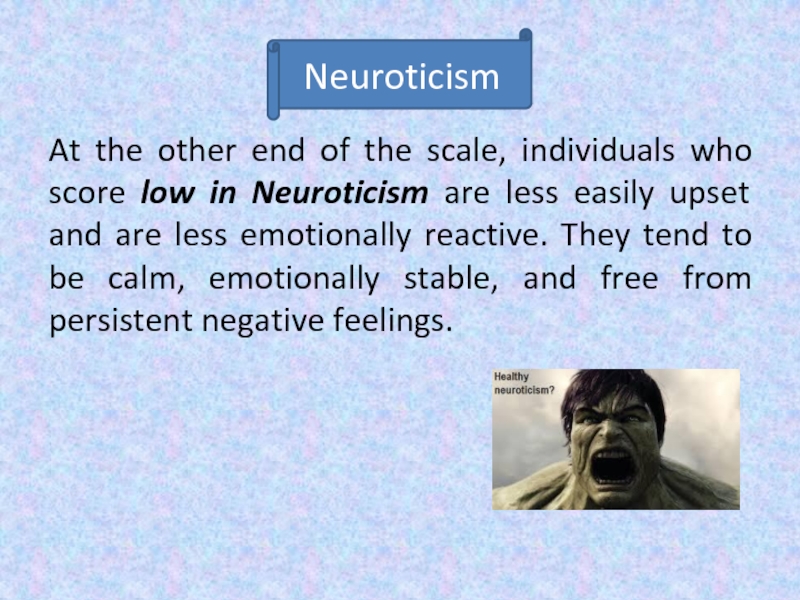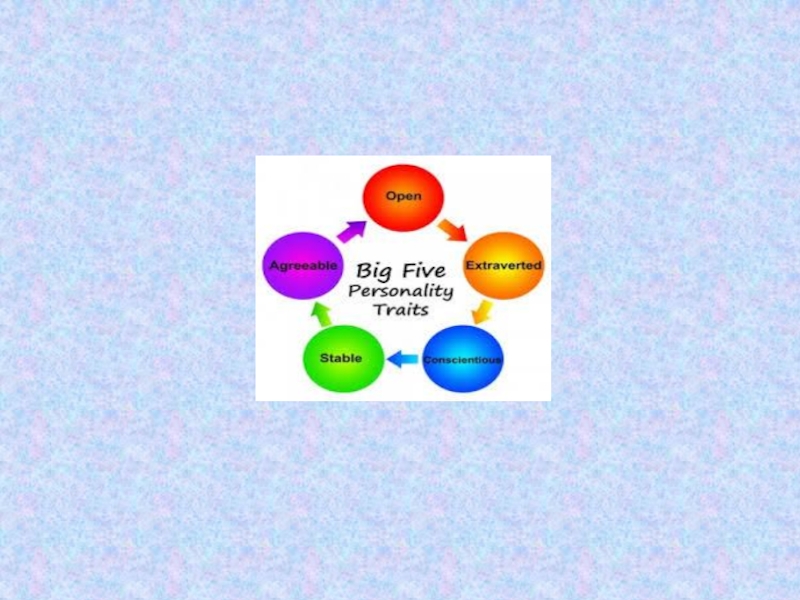- Главная
- Разное
- Дизайн
- Бизнес и предпринимательство
- Аналитика
- Образование
- Развлечения
- Красота и здоровье
- Финансы
- Государство
- Путешествия
- Спорт
- Недвижимость
- Армия
- Графика
- Культурология
- Еда и кулинария
- Лингвистика
- Английский язык
- Астрономия
- Алгебра
- Биология
- География
- Детские презентации
- Информатика
- История
- Литература
- Маркетинг
- Математика
- Медицина
- Менеджмент
- Музыка
- МХК
- Немецкий язык
- ОБЖ
- Обществознание
- Окружающий мир
- Педагогика
- Русский язык
- Технология
- Физика
- Философия
- Химия
- Шаблоны, картинки для презентаций
- Экология
- Экономика
- Юриспруденция
Personality презентация
Содержание
- 1. Personality
- 2. 1. Personality "Personality" can be defined
- 3. Derivation of the word The word "personality"
- 4. 2. Personality structure S.Freud’s view K.Platonov’s view
- 5. Freud’s view: personality is made up of
- 6. Three Parts of Personality (according to Freud)
- 7. K.Platonov asserts that personality has 4 substructures
- 9. 3. Personality Approaches Categorical type
- 10. Categorical Type Approach People
- 11. Trait Approach A descriptive approach
- 12. Behaviorist Approach Views personality as
- 13. Cognitive Approach Sees beliefs, thoughts,
- 14. Psychodynamic Approach Based on Freud's
- 15. Individual Approach Emphasizes higher human
- 16. Situational Approach Suggests that
- 17. Interactive Approach Combines the situational
- 18. 4. Eysenck's Theory of Personality Hans
- 19. Theory of Personality (1965) H.Eysenck used complex
- 20. Theory of Personality (1965) Then he has
- 21. Eysenck's Theory of Personality
- 22. 5. The Five Factor Model of personality
- 23. “The five factors” are often called OCEAN:
- 24. Openness to Experience describes a dimension
- 25. People with low scores on openness
- 26. Conscientiousness concerns the way in which
- 27. Conscientious individuals avoid trouble and achieve
- 28. Extraversion is marked by pronounced engagement
- 29. Introverts lack the exuberance, energy, and
- 30. Agreeableness reflects individual differences in concern
- 31. Agreeableness reflects individual differences in concern
- 32. Neuroticism refers to the tendency to
- 33. At the other end of the
Слайд 1PERSONALITY
Concept of Personality;
Personality Structure;
Personality Approaches;
Eysenck's Theory of Personality;
The Five Factor Model
Слайд 21. Personality
"Personality" can be defined as a dynamic and organized set
Слайд 3Derivation of the word
The word "personality" originates from the Latin persona,
Слайд 5Freud’s view: personality is made up of three parts:
The Id: a
The Ego: that part of the personality that is aware of reality and is in contact with the outside world. It is the part that considers the consequences of an action and deals with the demands of the Id and Superego.
The Superego: contains our social conscience and through the experience of guilt and anxiety when we do something wrong, it guides us towards socially acceptable behaviour.
Слайд 7K.Platonov asserts that personality has 4 substructures
1. Personality Attitude (moral qualities,
2. Experience (knowledge, skills, habits). It is acquired in the process of learning and upbringing.
Слайд 8
3. Reflection forms (individual peculiarities of psychic process formed and manifested
4. Biologically conditioned personality psychic functions (personality properties, sex and age peculiarities).
Слайд 93. Personality Approaches
Categorical type
Trait
Behaviourist
Cognitive
Psychodynamic
Individual
Situational
Interactive
Слайд 10Categorical Type Approach
People are fitted into broad categories, with each
Слайд 11Trait Approach
A descriptive approach in which people are defined according to
Слайд 12Behaviorist Approach
Views personality as merely a reflection of the person's learning
Слайд 13Cognitive Approach
Sees beliefs, thoughts, and mental processes as primary in determining
Слайд 14Psychodynamic Approach
Based on Freud's work and sees personality as determined by
Слайд 15Individual Approach
Emphasizes higher human motives and views personality as the individual's
Слайд 16Situational Approach
Suggests that personality is not consistent but is merely
Слайд 17Interactive Approach
Combines the situational and trait approaches, so suggests that people
Слайд 184. Eysenck's Theory of Personality
Hans Jürgen Eysenck (1916 – 1997)
Слайд 19Theory of Personality (1965)
H.Eysenck used complex statistical techniques to analyze and
Слайд 20Theory of Personality (1965)
Then he has since added a third, intelligence-psychoticism,
Слайд 225. The Five Factor Model of personality
The "Big five" personality traits
"address of the president before
the American Psychological
Association“, Chicago meeting,
September, 1933.
Слайд 23“The five factors” are often called OCEAN:
Conscientiousness
Openness
Extravertion
Agreeableness
Neuroticism
Слайд 24
Openness to Experience describes a dimension of personality that distinguishes imaginative,
Openness to Experience
Слайд 25
People with low scores on openness to experience tend to have
Openness to Experience
Слайд 26
Conscientiousness concerns the way in which we control, regulate, and direct
Conscientiousness
Слайд 27
Conscientious individuals avoid trouble and achieve high levels of success through
Conscientiousness
Слайд 28
Extraversion is marked by pronounced engagement with the external world. Extraverts
Extraversion
Слайд 29
Introverts lack the exuberance, energy, and activity levels of extraverts. They
An extrovert gains energy by associating with others and loses energy when alone for any period of time. An introvert is the opposite, as they gain energy from doing individual activities and lose energy from social activities.
Extraversion
Слайд 30
Agreeableness reflects individual differences in concern with cooperation and social harmony.
Agreeableness
Слайд 31
Agreeableness reflects individual differences in concern with cooperation and social harmony.
Agreeableness
Слайд 32
Neuroticism refers to the tendency to experience negative emotions. Those who
Neuroticism
Слайд 33
At the other end of the scale, individuals who score low
Neuroticism
